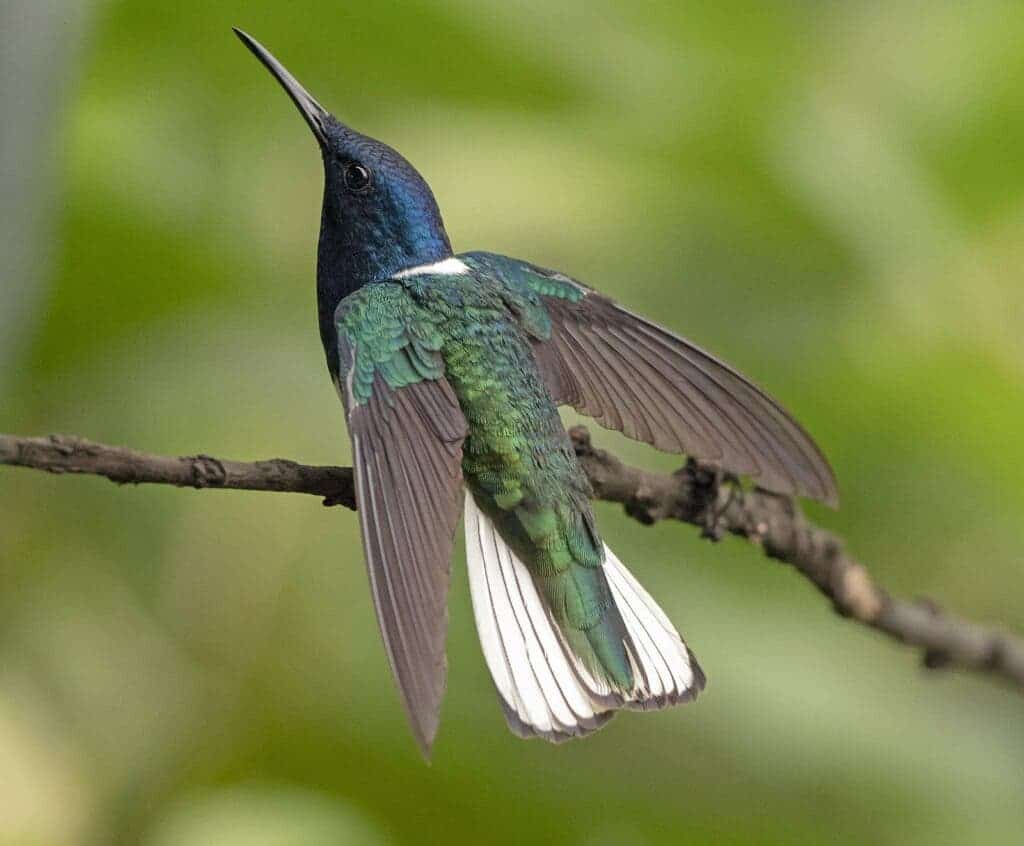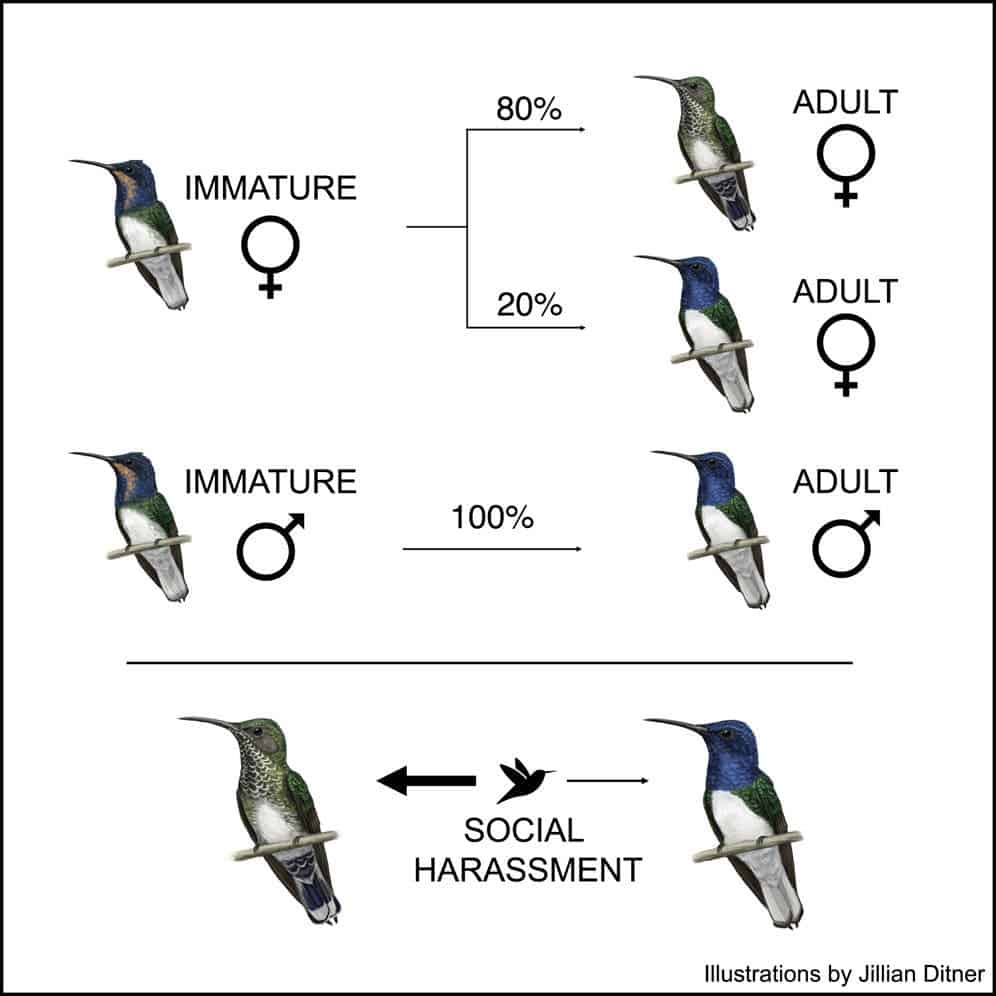Harassment is not acceptable, whether you’re a human or an animal — or at least it shouldn’t be. Nevertheless, it’s something that still happens to many, including female hummingbirds. They are frequently targeted by their male counterparts, which has forced them to search for solutions. According to a new study, they’ve found one and it’s all about evolution.

Jay Falk, a biologist from the University of Washington, has long been working with white-necked jacobins (Florisuga Mellivora), spectacular hummingbirds from all across Central America. They are unmistakable thanks to their white belly and tail, in the case of the males, and their green upperparts and white-scaled green or blue throat.
We tend to think of hummingbirds as friendly and cute but their world is actually much harsher. For instance, the males frequently act as bullies. When they see a female, they peck, catcall or body slam them. This is sometimes about sex, but other times, just about asserting dominance. Unsurprisingly, female hummingbirds would love to have a way of avoiding this.
As it turns out, evolution was on their side. Over time, females jacobins ditched their usual greenish outfits and tended to copy the sapphire feathers of males. In other words, the birds that looked more like males would suffer less bullying and were more likely to spread their genes. And it turns out they were successful, as now males and male-like females seem to be living in harmony, according to a study by Falk and his fellow researchers.
“One of the ‘aha moments’ of this study was when I realized that all of the juvenile females had showy colors,” Falk said in a statement. “For birds that’s really unusual because you usually find that when the males and females are different, the juveniles usually look like the adult females, not the adult males, and that’s true almost across the board.”
A trip to Central America
Falk became a regular in Panama, where he traveled many times to observe the jacobins interact. He observed most juveniles, both male and female, have colorful plumage. However, as they grow older, only 80% of the females change their outfits. The rest keep their flashy feathers, which makes them indistinguishable from most males.

This was very surprising for Falk and his team, who decided to do an experiment to see how the birds interact based on their coloring. They used a feeder with nectar to attract the hummingbirds and added taxidermy mounts in order to tell how they could alter the interactions of the wild birds. They used three combinations of two mounts.
When the researchers looked at the acts of aggression between the stuffed and the real hummingbirds, they found that the stuffed colorless females were often attacked much more than the stuffed colorful females. Even birds of other species ended up joining the attacks against the colorless jacobins, according to the study’s findings.
Some of the attacks are because of sexual attraction, with males wanting to mate with as many females as possible, Falk said. But there are other reasons too, including hunger. Hummingbirds are always seeking for food due to their very high metabolic rates, so they end up picking a fight between each other to get the much-desired nectar.
“Hummingbirds are such beloved animals by many people, but there are still mysteries that we haven’t noticed or studied,” Falk said in a statement. “It’s cool that you don’t have to go to an obscure unknown bird to find interesting and revealing results. You can just look at a bird that everyone loves to watch in the first place.”
The study was published in the journal Current Biology.


